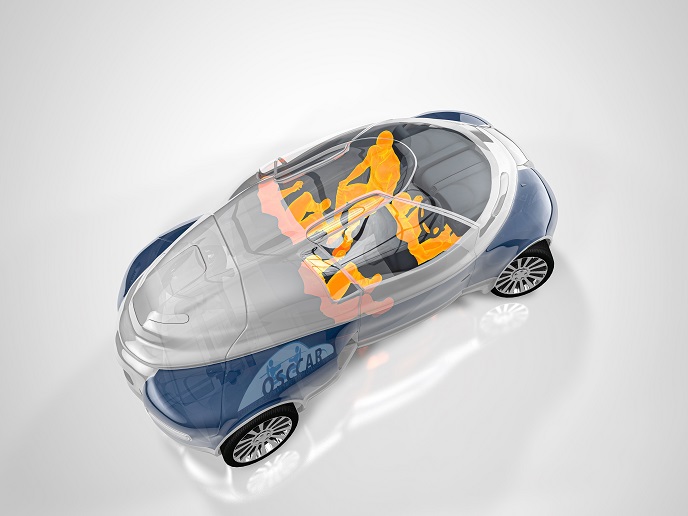Virtual accident prognosis for automated vehicles
In Europe, the required safety of vehicles is determined through ECE Regulations (Homologation requirements) and supplemented, amongst others, by Consumer tests designed and carried out by Euro NCAP(opens in new window). These tests represent real-life accident scenarios that could result in injured or killed vehicle occupants or other road users.
Advanced human body models for vehicle safety
The key objective of the EU-funded OSCCAR(opens in new window) was to enable the development of advanced occupant protection systems through a novel simulation-based approach. “One of our goals was to develop tools and methods ensuring occupant safety for accidents in mixed traffic scenarios that automated vehicles and their occupants will most likely face in the future,” explains Werner Leitgeb, project coordinator and lead researcher at Virtual Vehicle Research GmbH(opens in new window). Highly automated vehicles (HAVs) introduce alternative, more comfortable, and relaxed seating positions, up to potentially a rotating seat. They require development, safety approval and homologation and of more advanced and novel restraint systems to safeguard occupants in traffic future accidents. OSCCAR brought together 21 partners, ranging from OEMs, TIER suppliers and research organisations that collaborated internationally to further develop and enhance virtual testing and development with advanced human body models that will allow for assessment of such complex test scenarios. Conventionally, vehicle safety tests employ physical crash test dummies, technically known as anthropomorphic test devices. However, these do not generally take into consideration heterogeneity characteristics like gender, age and other demographic factors that may affect the outcome of a car crash. Project researchers used biomechanical data to enhance existing human body models, that represent the actual human body instead of a physical test device make them fit for future safety testing needs. Virtual assessment of advanced protection systems for conventional vehicles and HAVs will assist in the homologation of HAV-enabled seating positions.
The future of predicting accidents
OSCCAR partners developed a methodology to predict future crash configurations using accident data and pre-crash simulations. This enabled them to describe the accidents that are expected to persist with automated driving. Moreover, OSCCAR generated an open-source accident simulation tool to predict the influence of automation and active safety based on accident data and traffic models for mixed human/automated traffic. This tool can complement existing Euro NCAP virtual testing activities to support the automotive sector’s next steps towards safety. Collectively, the OSCCAR framework addresses many challenges of future road safety slated to arise due to the introduction of HAVs as well as changes in demographics. It helps assess scenarios of mixed traffic, future vehicle interior designs, new occupant seating positions and the ageing population. Importantly, implementation of OSCCAR deliverables will ensure that the safety, accessibility, and efficiency promised by HAVs become a reality.



